Gyeongbokgung-Palace(경복궁 景福宮)

Gyeongbokgung-Palace(경복궁),
Also known as Gyeongbokgung Palace or Gyeongbok Palace is a royal palace located in northern Seoul, South Korea. First constructed in 1395, later burned and abandoned for almost three centuries, and then reconstructed in 1867, it was the main and largest palace of the Five Grand Palaces built by the Joseon Dynasty. The name means “Palace” [Gung] “Greatly Blessed by Heaven” [Gyeongbok].
In the early 20th century, much of the palace was destroyed by the Empire of Japan. Since then, the walled palace complex has been gradually restored back to its original form. As of 2009, roughly 40% of the original number of palace buildings still stand or are reconstructed.
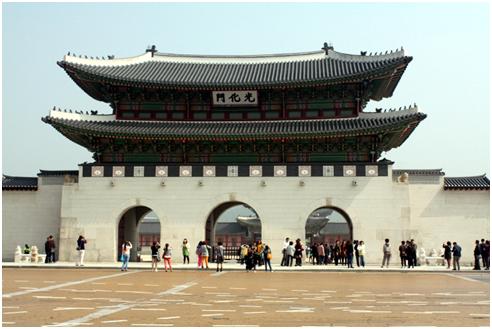
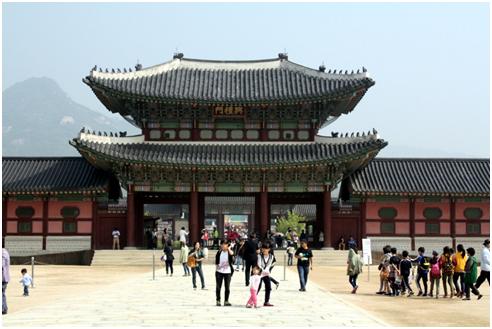
Overview
Gyeongbokgung was built three years after the Joseon Dynasty was founded and it served as its main palace. With Mount Bugaksan as a backdrop and the Street of Six Ministries (today’s Sejongno) outside Gwanghwamun Gate, the main entrance to the palace, Gyeongbokgung was situated in the heart of the Korean capital city.
It was steadily expanded before being reduced to ashes during the Japanese invasion of 1592. For the next 273 years the palace grounds were left derelict until being rebuilt in 1867 under the leadership of Prince Regent Heungseon Daewongun. The restoration was completed on a grand scale, with 330 buildings crowded together in a labyrinthine configuration.
Within the palace walls were the Outer Court (oejeon), offices for the king and state officials, and the Inner Court (naejeon), which included living quarters for the royal family as well as gardens for leisure. Within its extensive precincts were other palaces, large and small, including Junggung (the Queen`s residence) and Donggung (the Crown prince’s residence). Owing to its status as the symbol of national sovereignty, Restoration of Gyeongbokgung to its former glory has been ongoing since 1990. The Government-General Building was removed in 1996 and Heungnyemun Gate (2001) and Gwanghwamun Gate (2006-2010) were reconstructed in their original locations and forms. Reconstructions of the Inner Court and Crown Prince’s residence have also been completed.
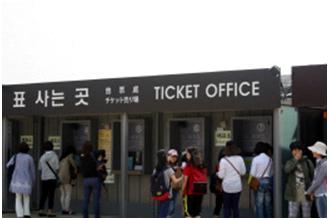
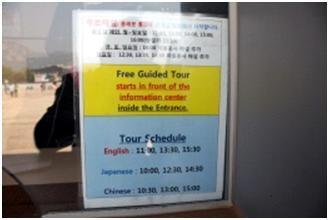

Entrance Fee : 3,000won Under age18 1,500won
Hours of Operation : Jan~Feb 09:00~17:00 Mar~May 09:00~18:00 Jun~Aug 09:00~18:30 Sep~Oct 09:00~18:00 Nov~Dec 09:00~17:00 (Last ticketing: closing befor 1hour )
Every Tue. Closed

Geunjeongjeon(Hangul: 근정전; Hanja: 勤政殿)
consists of corridors and fourteen rectangular chambers, each seven chambers located to the left and right side of the building in a layout out like a checkerboard. The king used the central chamber while the court attendants occupied the remaining side chambers to protect, assist, and to receive orders. The building rests on top of a tall stone foundation, and a stone deck or veranda is located in front of the building.
The noted feature of the building is an absence of a top white roof ridge called yongmaru (Hangul: 용마루) in Korean. Many theories exist to explain the absence, of which a prominent one states that, since the king was symbolized as the dragon during the Joseon Dynasty, the yongmaru, which contains the letter dragon or yong (龍), cannot rest on top of the king when he is asleep.
Geunjeongjeon
Geunjeongjeon (Throne Hall)Geunjeongjeon (Hangul: 근정전; Hanja: 勤政殿), also known as Geunjeongjeon Hall, is the throne hall where the king formally granted audiences to his officials, gave declarations of national importance, and greeted foreign envoys and ambassadors during the Joseon Dynasty. The building was designated as Korea’s National Treasure No. 223 on January 8, 1985.
Geunjeongjeon was originally constructed in 1395 during the reign of King Taejo, but was burned down in 1592 when the Japanese invaded Korea. The present building was built in 1867 when Gyeongbokgung was being reconstructed. The name Geunjeongjeon, created by the minister Jeong Dojeon, means “diligence helps governance.”
Constructed mainly of wood, Geunjeongjeon sits on the center of a large rectangular courtyard, on top of a two-tiered stone platform. This two-tiered platform is lined with detailed balustrades and is decorated with numerous sculptures depicting imaginary and real animals, such as dragons and phoenixes. The stone-paved courtyard is lined with two rows of rank stones, called pumgyeseoks (Hangul: 품계석; Hanja: 品階石), indicating where the court officials are to stand according to their ranks. The whole courtyard is fully enclosed by wooden cloisters.
sculptures depicting imaginary and real animals, such as dragons and phoenixes(left),
two rows of rank stones, called pumgyeseoks (Hangul: 품계석; Hanja: 品階石)(right)
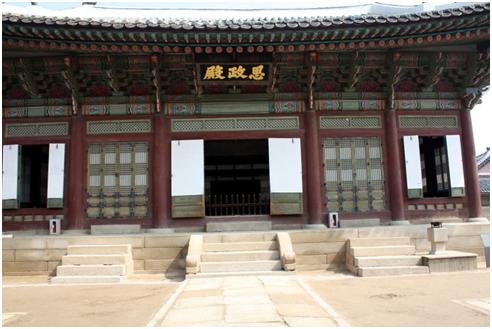
Sajeongjeon (Hangul: 사정전; Hanja: 思政殿)
SajeongjeonSajeongjeon (Hangul: 사정전; Hanja: 思政殿), also called Sajeongjeon Hall, is a building used as the main executive office by the king during the Joseon Dynasty. Located behind Geunjeongjeon Hall, the king carried out his executive duties and held meetings with the top government officials in Sajeongjeon. Two separate side buildings, Cheonchujeon (Hangul: 천추전; Hanja: 千秋殿) and Manchunjeon (Hangul: 만춘전; Hanja: 萬春殿), flank the west and east of Sajeongjeon, and while Sajeongjeon is not equipped with a heating system, these buildings are equipped with Ondols for their use in the colder months.
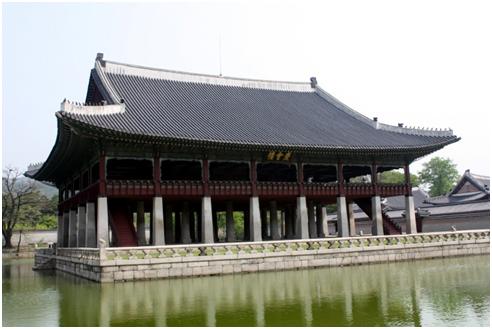
Gyeonghoeru (Hangul: 경회루; Hanja: 慶會樓)
Gyeonghoeru (Royal Banquet Hall)Gyeonghoeru (Hangul: 경회루; Hanja: 慶會樓), also known as Gyeonghoeru Pavilion, is a hall used to hold important and special state banquets during the Joseon Dynasty. It is registered as Korea’s National Treasure No. 224 on January 8, 1985.
The first Gyeonghoeru was constructed in 1412, the 12th year of the reign of King Taejong, but was burned down during the Japanese invasions of Korea in 1592. The present building was constructed in 1867 (the 4th year of the reign of King Gojong)
Constructed mainly of wood and stone, Gyeonghoeru has a form where the wooden structure of the building sits on top of 48 massive stone pillars, with wooden stairs connecting the second floor to the first floor. The outer perimeters of Gyeonghoeru are supported by square pillars while the inner columns are cylindrical; they were placed thus to represent the idea of Yin & Yang. When Gyeonghoeru was originally built in 1412, these stone pillars were decorated with sculptures depicting dragons rising to the sky, but these details were not reproduced when the building was rebuilt in the 19th century. Three stone bridges connect the building to the palace grounds, and corners of the balustrades around the island are decorated with sculptures depicting twelve Zodiac animals.
Gyeonghoeru used to be represented on the 10,000 won Korean banknotes (1983-2002 Series)
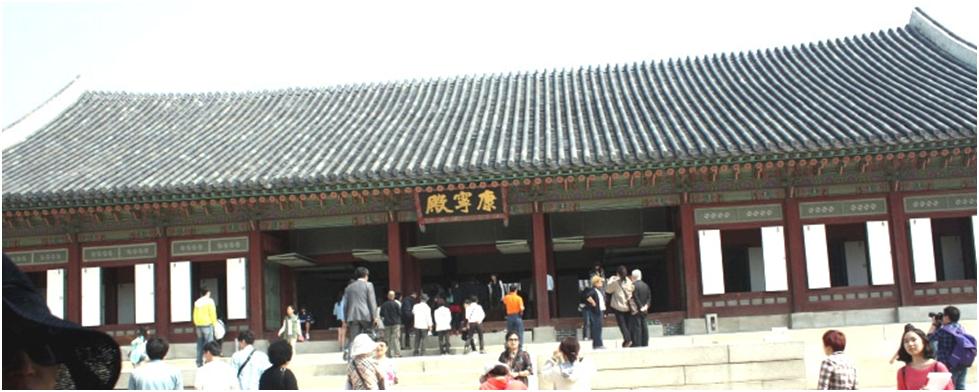
Gangnyeongjeon(Hangul: 강녕전; Hanja: 康寧殿)
Gangnyeongjeon (King’s Quarters)Gangnyeongjeon (Hangul: 강녕전; Hanja: 康寧殿), also called Gangnyeongjeon Hall, is a building used as the king’s main residing quarters.[6] First constructed in 1395, the fourth year of King Taejo, the building contains the king’s bed chamber.[6] Destroyed during the Japanese invasions of Korea in 1592, the building was rebuilt when Gyeongbokgung was reconstructed in 1867, but it was again burned down by a major fire on November 1876 and had to be restored in 1888 following the orders of King Gojong.
However, when Huijeongdang of Changdeokgung Palace was burned down by a fire in 1917, the Japanese government dismembered the building and used its construction materials to restore Huijeongdang in 1920. Current Gangnyeongjeon was built in 1994, meticulously restoring the building to its original specifications and design.
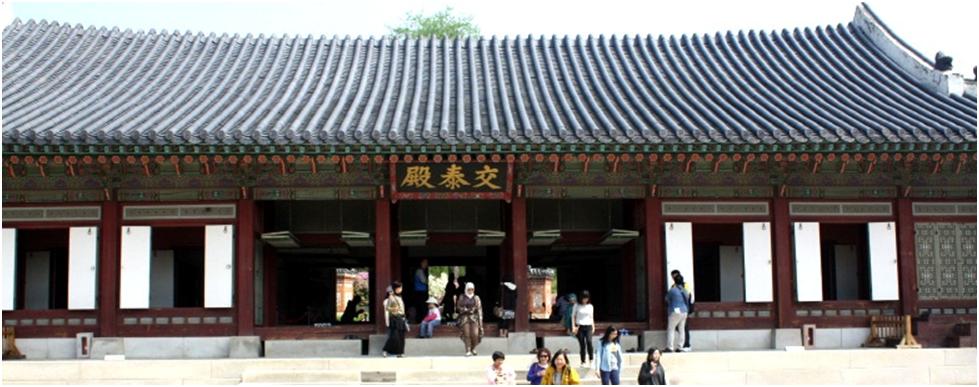
Gyotaejeon (Hangul: 교태전; Hanja: 交泰殿),
Gyotaejeon (Queen’s Quarters)Gyotaejeon (Hangul: 교태전; Hanja: 交泰殿), also called Gyotaejeon Hall, is a building used as the main residing quarters by the queen during the Joseon Dynasty. The building is located behind Gangnyeongjeon, the king’s quarters, and contains the queen’s bed chamber. It was first constructed in around 1440, the 22nd year of King Sejong the Great.
King Sejong, who was noted to have a frail health later in his reign, decided to carry out his executive duties in Gangnyeongjeon, where his bed chamber is located, instead of Sajeongjeon. Since this decision meant many government officials routinely needed to visit and intrude Gangnyeongjeon, King Sejong had Gyotaejeon built in consideration of his wife the queen’s privacy.
The building was burned down in 1592 when the Japanese invaded Korea, but was reconstructed in 1867. Nevertheless, when Daejojeon of Changdeokgung Palace was burned down by a fire in 1917, the Japanese government disassembled the building and recycled its construction materials to restore Daejojeon. The current building was reconstructed in 1994 according to its original design and specifications. The building, like Gangnyeongjeon, does not have a top roof ridge called yongmaru.

Jagyeongjeon (Hangul: 자경전; Hanja: 慈慶殿)
Jagyeongjeon (Quarters of the King’s mother)Jagyeongjeon (Hangul: 자경전; Hanja: 慈慶殿), also called Jagyeongjeon Hall, is a building used as the main residing quarters by Queen Sinjeong (Hangul: 신정왕후; Hanja: 神貞王后), the mother of King Heonjong. First constructed in 1865, it was burned down twice by a fire but was reconstructed in 1888. Jagyeongjeon is the only royal residing quarters in Gyeongbokgung
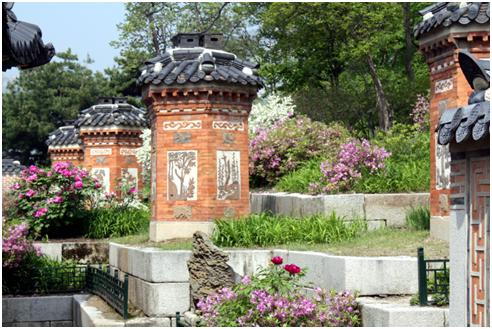
Amisan (Hangul: 아미산; Hanja: 峨嵋山)
a famous garden created from an artificial mound, is located behind Gyotaejeon. Four hexagonal chimneys, constructed around 1869 in orange bricks and decorative roof tiles, adorn Amisan without showing their utilitarian function and are notable examples of formative art created during the Joseon Dynasty. The chimneys were registered as Korea’s.
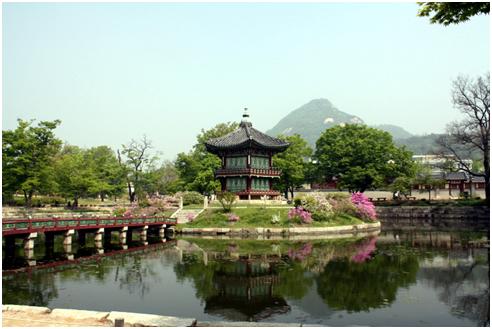
Hyangwonjeong (Hangul: 향원정; Hanja: 香遠亭)
HwangwonjeongHyangwonjeong (Hangul: 향원정; Hanja: 香遠亭), or Hyangwonjeong Pavilion, is a small, two-story hexagonal pavilion built around 1873 by the order of King Gojong when Geoncheonggung residence was built to the north within Gyeongbokgung.
The pavilion was constructed on an artificial island of a lake named Hyangwonji (Hangul: 향원지; Hanja: 香遠池), and a bridge named Chwihyanggyo (Hangul: 취향교; Hanja: 醉香橋) connects it to the palace grounds.
The name Hyangwonjeong loosely translates as “Pavilion of Far-Reaching Fragrance,” while Chwihyanggyo translates as “Bridge Intoxicated with Fragrance.”The bridge Chwihyanggyo was originally located on the north side of the island and was the longest bridge constructed purely of wood during the Joseon Dynasty; however, it was destroyed during the Korean War. The bridge was reconstructed in its present form on the south side of the island in 1953.
hat survived the demolition campaigns of the Japanese government during the Japanese occupation of Korea. The chimneys of Jagyeongjeon are decorated with ten signs of longevity to wish for a long life for the late queen, while the west walls of the Jagyeongjeon compound are adorned with floral designs.[14] The protruding southeast part of Jagyeongjeon, named Cheongyeollu (Hangul: 청연루; Hanja: 清讌樓), is designed to provide a cooler space during the summer, while the northwest part of Jagyeongjeon, named Bokandang (Hangul: 복안당; Hanja: 福安堂), is designed for the winter months. The eastern part of Jagyeogjeon, named Hyeopgyeongdang (Hangul: 협경당; Hanja: 協慶堂) and distinguished by the building’s lower height, was used by the late queen’s assistants.
The building and the decorative walls were registered as Korea’s Treasure No. 809 on January 8, 1985.
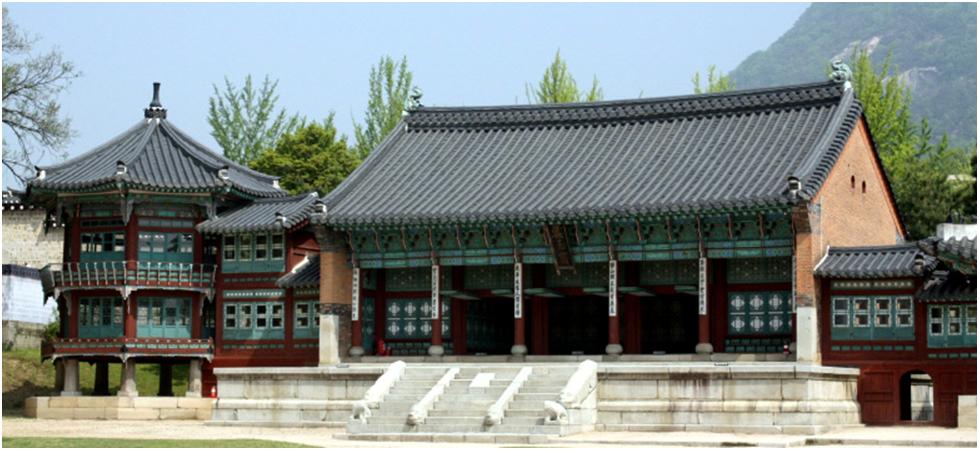
Jibokjae (Hangul: 집옥재; Hanja: 集玉齋)
Jibokjae (Private Royal Library)Jibokjae (Hangul: 집옥재; Hanja: 集玉齋), located next to Geoncheonggung Residence, is a two-story private library used by King Gojong. In 1876, a major fire occurred in Gyeongbokgung Palace, and King Gojong, for a brief period, moved and resided in Changdeokgung Palace. He eventually moved back to Gyeongbokgung in 1888, but he had the pre-existing Jibokjae building disassembled and moved from Changdeokgung to the present location in 1891.[15] Its name, Jibokjae, translates loosely in English as the “Hall of Collecting Jade.”
The building uniquely shows heavy influence of Chinese architecture instead of traditional Korean palace architecture.[16] Its side walls were entirely constructed in brick, a method commonly employed by the contemporary Chinese, and its roof formations, interior screens, and columns also show Chinese influences. Its architecture possibly was meant to give it an exotic appearance.
Jibokjae is flanked by Parujeong (Hangul: 팔우정; Hanja: 八隅亭), an octagonal two-story pavilion, to the left and Hyeopgildang (Hangul: 협길당; Hanja: 協吉堂) to the right. Parujeong was constructed to store books, while Hyeopgildang served as a part of Jibokjae. Both of the buildings are internally connected to Jibokjae.
Bohyeondang (Hangul: 보현당; Hanja: 寶賢堂) and Gahoejeong (Hangul: 가회정; Hanja: 嘉會亭), buildings that also formed a library complex to the south of Jibokjae, were demolished by the Japanese government in the early 20th century.
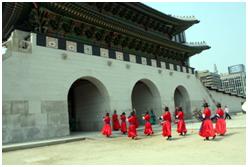
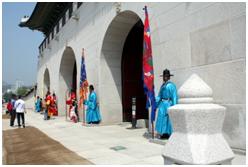
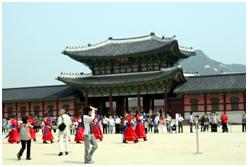
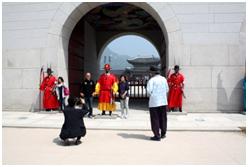
Events In a poll of nearly 2,000 foreign visitors, conducted by the Seoul Metropolitan Government in November 2011, stated that watching the changing of the guards at the main gate Gwanghwamun as their third favorite activity in Seoul.The royal changing of the guard ceremony is held in front of the main gate every hour from 10:00 to 15:00.

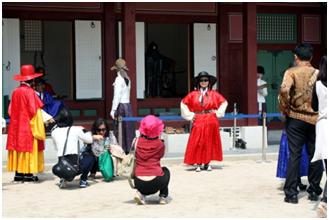

Royal guards cloths Free rental service from 10:20 AM~ 13:20PM~ 15:20AP~
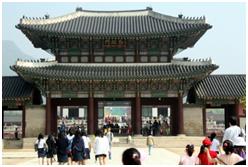
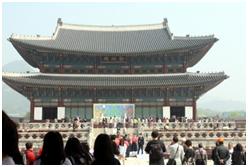
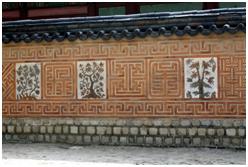

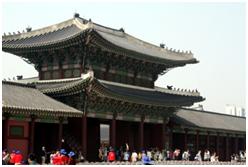
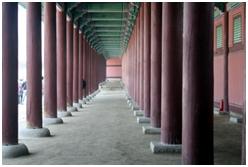
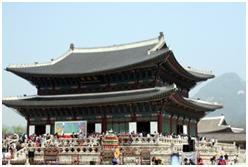
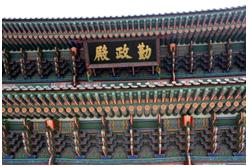
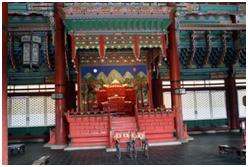
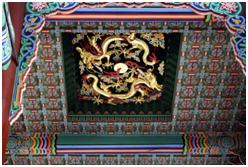
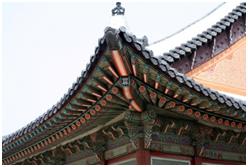
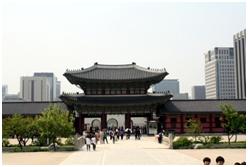
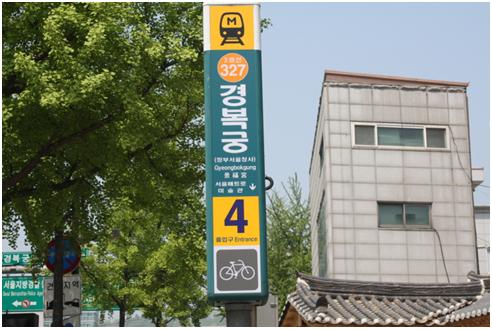
Transportation
Gyeongbokgung entry is located 22 Sajik-no, Jongno-gu. The nearest subway station is Gyeongbokgung Station (Station #327 on Line 3).Excit No4
There has been off and on talk to extending the Sin Bundang Line near the palace including during a March 2012 campaign promise by Hong Sa-duk to expand the line near Gyeongbok Palace.

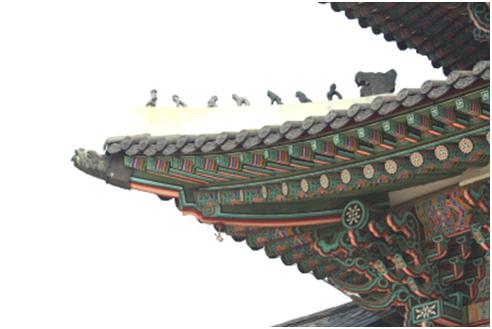
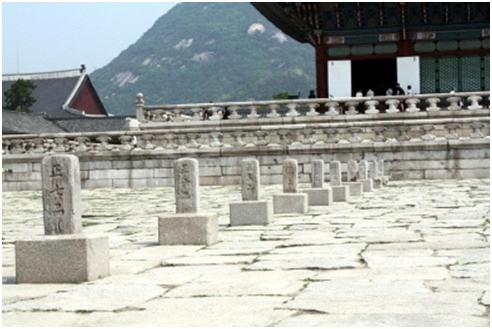
Amazing! This blog looks just like my old one! It’s on a entirely different topic but it has pretty much the same page
layout and design. Wonderful choice of colors!